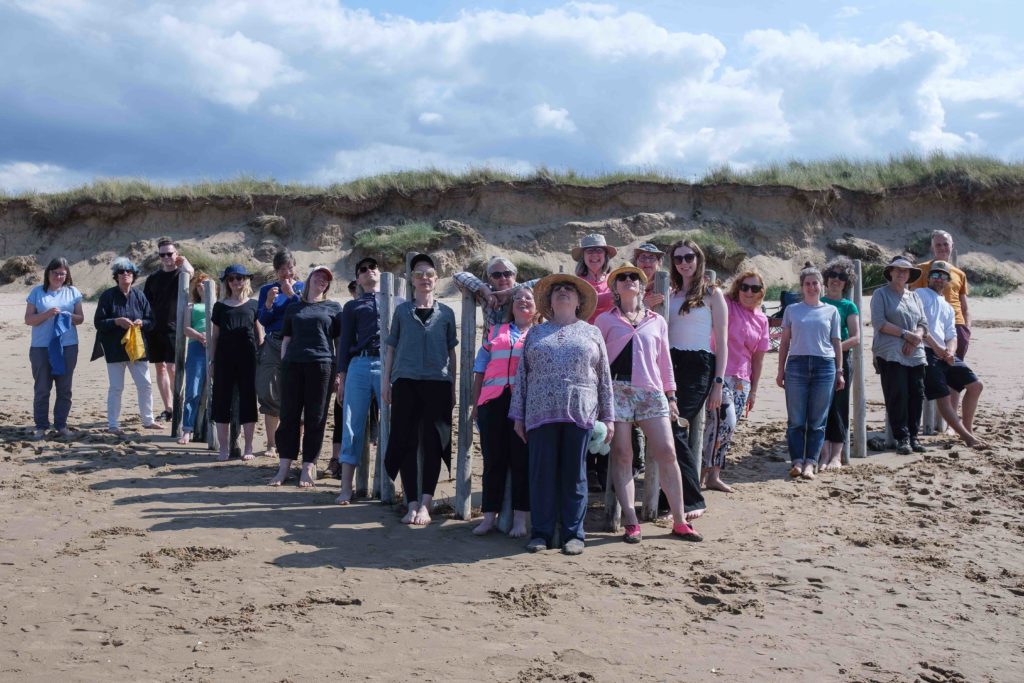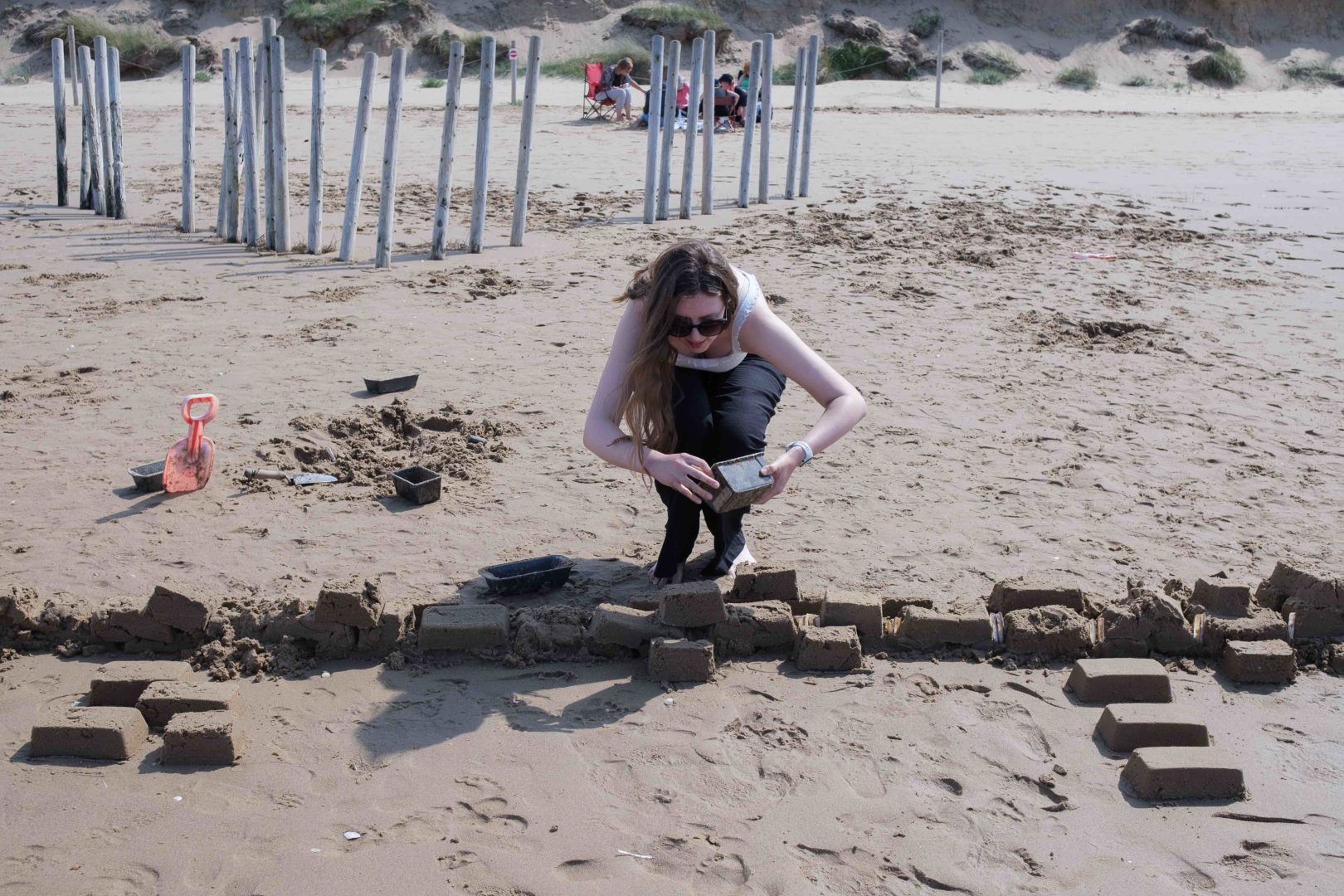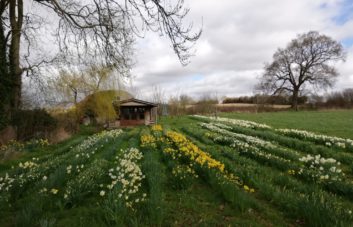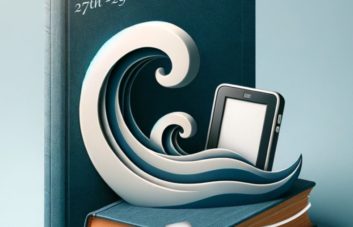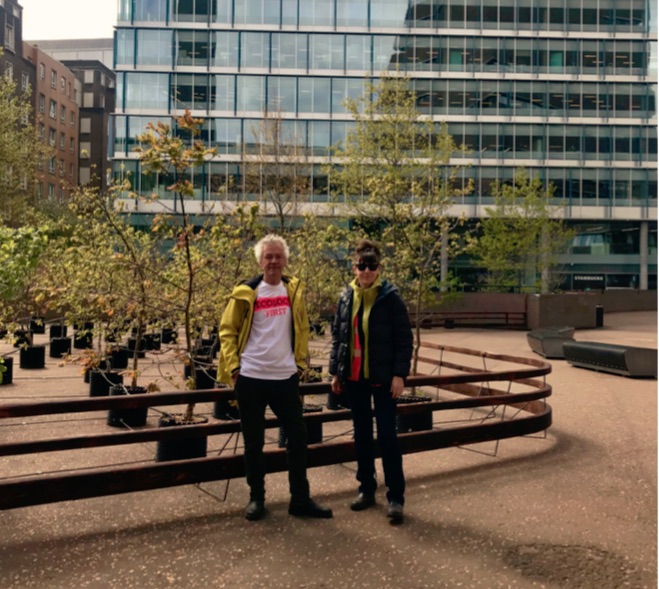The Ear of the Sea was a programme of workshop activities held on Holme Beach, Norfolk. It was led by Jane Scobie who generously offered to put her work at its centre. The activities involved artists who had been in residence with the gallery in 2023. Conceived initially as a response to, and in opposition to, the proposed Wash Barrage, over the course of planning, and because of the practicalities of delivery, it developed as more of a response to the sea itself. The idea was to demonstrate the life of the sea, its rights for survival and its need for understanding and protection. The five artists involved each took quite different approaches and delivered the workshops to the current, 2024 artists in residence. So it became a communication between artists, which tackled different approaches to the shore-line environment.
Picture Credits: All the pictures in this article are by julia@neometa.art
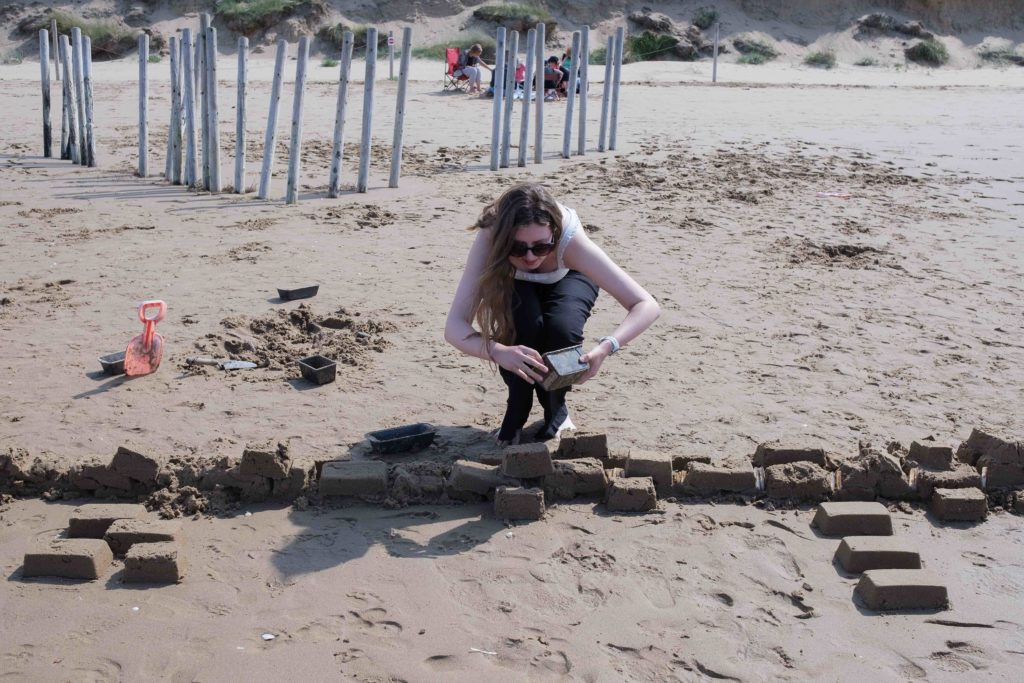
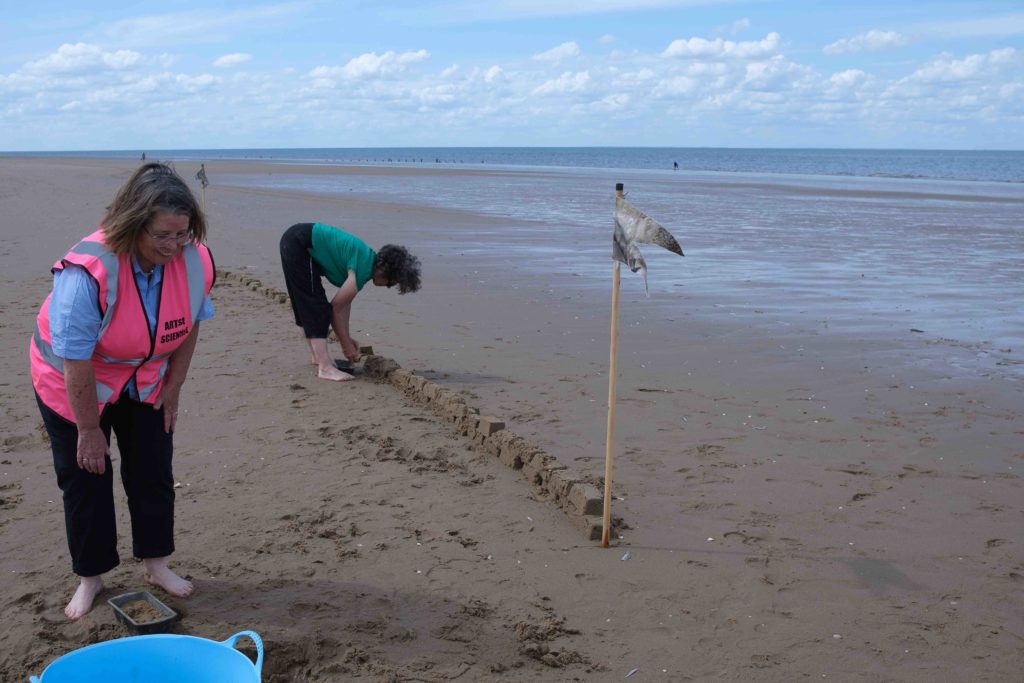
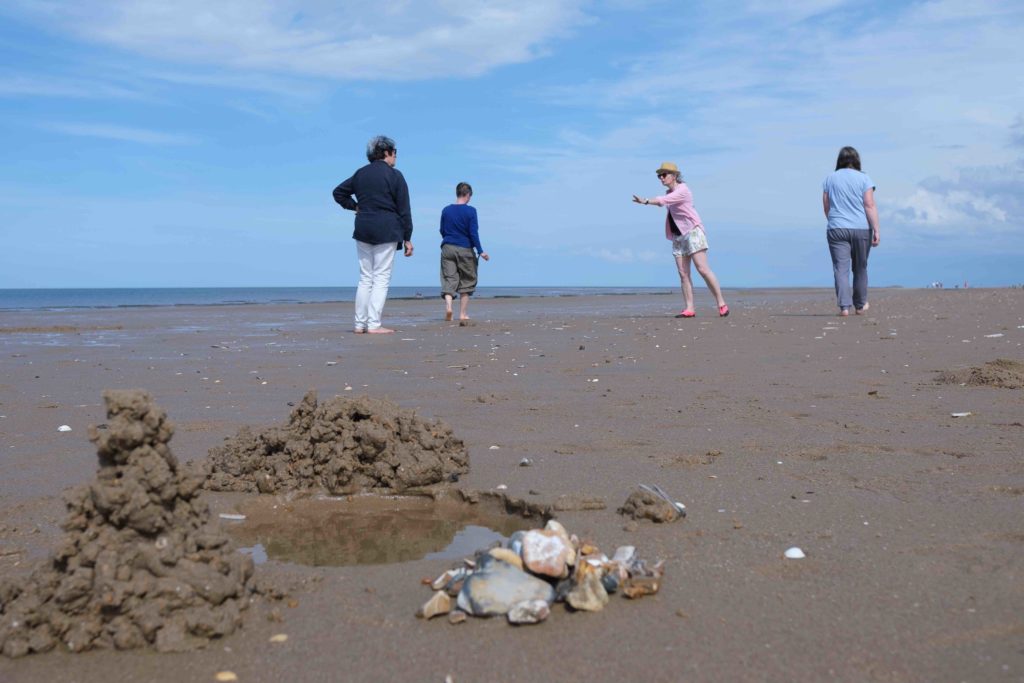
The Wash and the Beach
Before the workshops we had just had an informative and inspiring beach walk with Nick Acheson. He focused on the wildlife, the plants, the habitats and with enormous empathy for the non-human life of the sea and shore, he immersed us into nature.

So, the Ear of the Sea turned out to be a perfect complement to that, and end to that day. As it was, the workshops demonstrated that without much need for explanation, art can engage emotions more deeply, can highlight material properties and practical understanding of the environment. Participants could express themselves and make their own responses. As an event, it was expressive and creative.
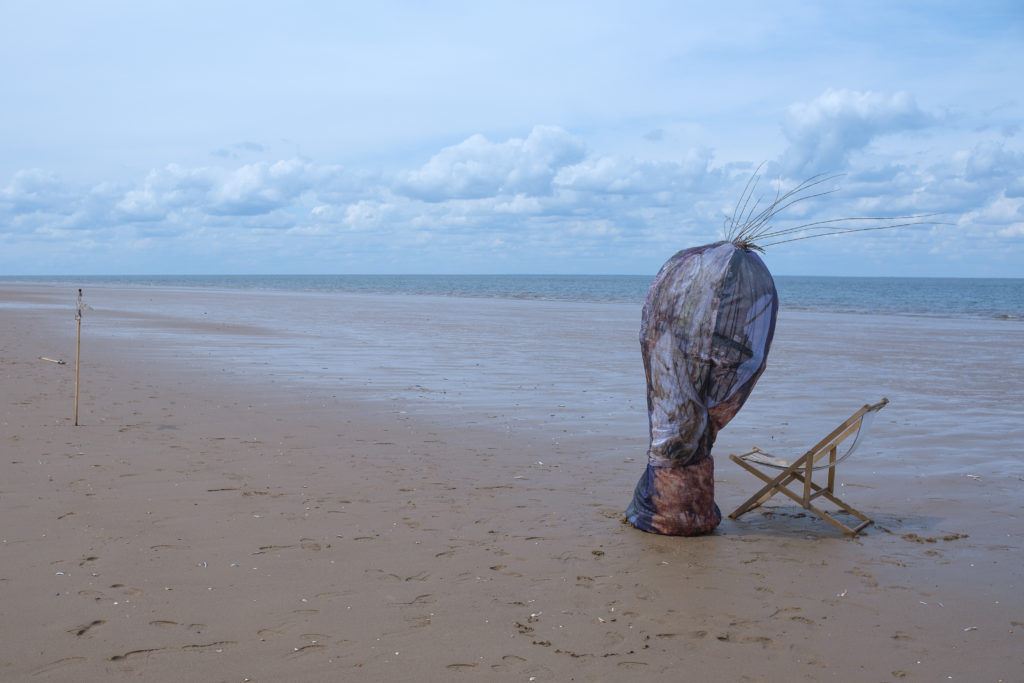
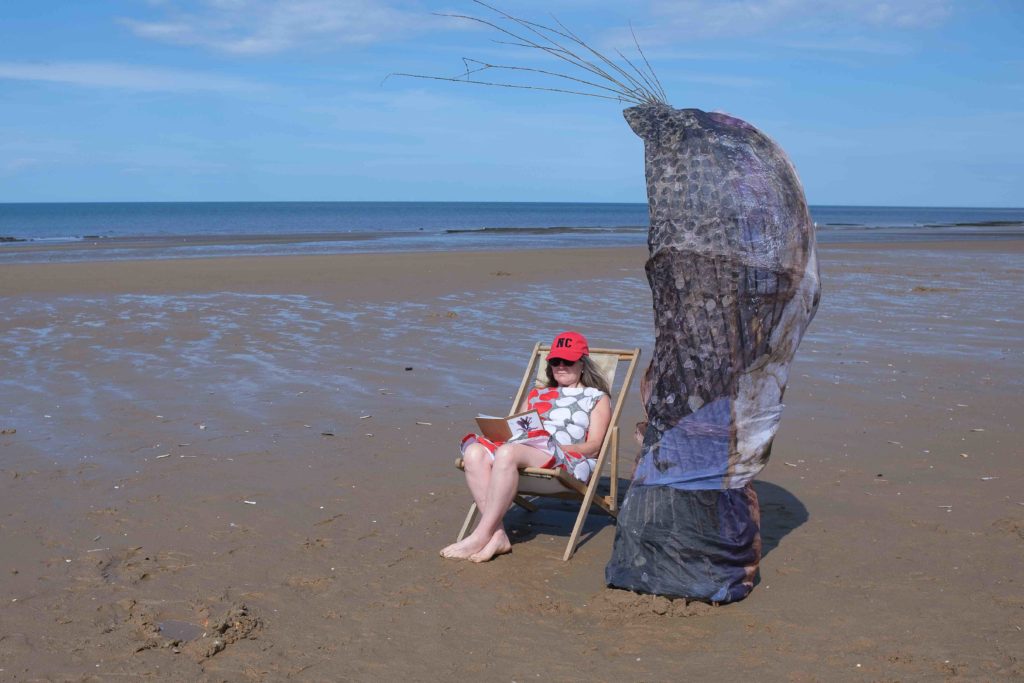
The original idea overall was to sharpen focus on the Wash and its creatures – highlighting the life of the sea which had been hitherto disregarded in the development plans – and indeed for much of the history of the Wash altogether. While all of the activities focussed on this directly, were the day aiming at a more general public, we all knew that it would have needed a clearer framing and introduction – more discussion throughout to bring out the ideas and relate the activity to a more general audience. This project was a pilot and not yet at the stage of engaging the wider anti-Wash Barrage debate. It also needs to develop scale, to become a bigger project with more of a mass impact. This was just a start and with more partnership working, I am sure we can build a repertoire of artistic interventions which will have not only artistic, but also environmental and political impact
Ear of the Sea Workshop Artists
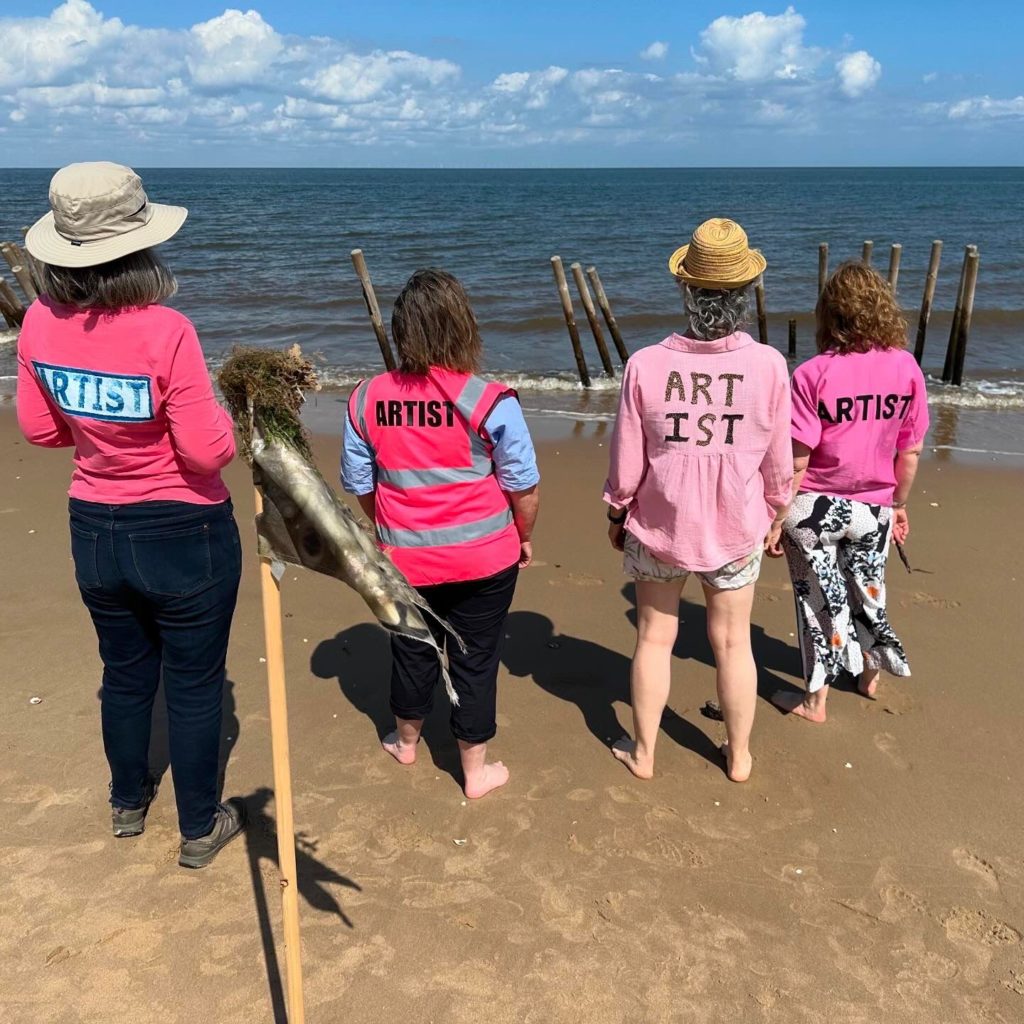
Jane Scobie was the project leader and gave us the context of her work as a whole, for the development of ideas for the Ear of the Sea as an intervention. She wanted it to engage with the audience, involving them in contemplation of the site both creatively and physically. She invited participants to sit in her deckchair and write their own responses to the environment and then to mould ‘bricks’ from wet sand to help to build a sea wall, which would eventually be destroyed by the incoming tide. It was intended as a metaphor to show what was in her view, the futility of engineering solutions to the power of the sea. Her sea poem, an ode to the biodiversity of the strandline, finished the event.


Sophie Marritt showed a series of atmospheric postcards of largely rural views from both sides of the Wash, in Lincolnshire and Norfolk, It brought home just how unspoilt is the region and what would be at stake if it was over-run by development. She was never explicit, yet it gave us the clearest context for the detrimental impact that the infrastructure of the Wash Barrage would have on this fragile and unspectacular environment.
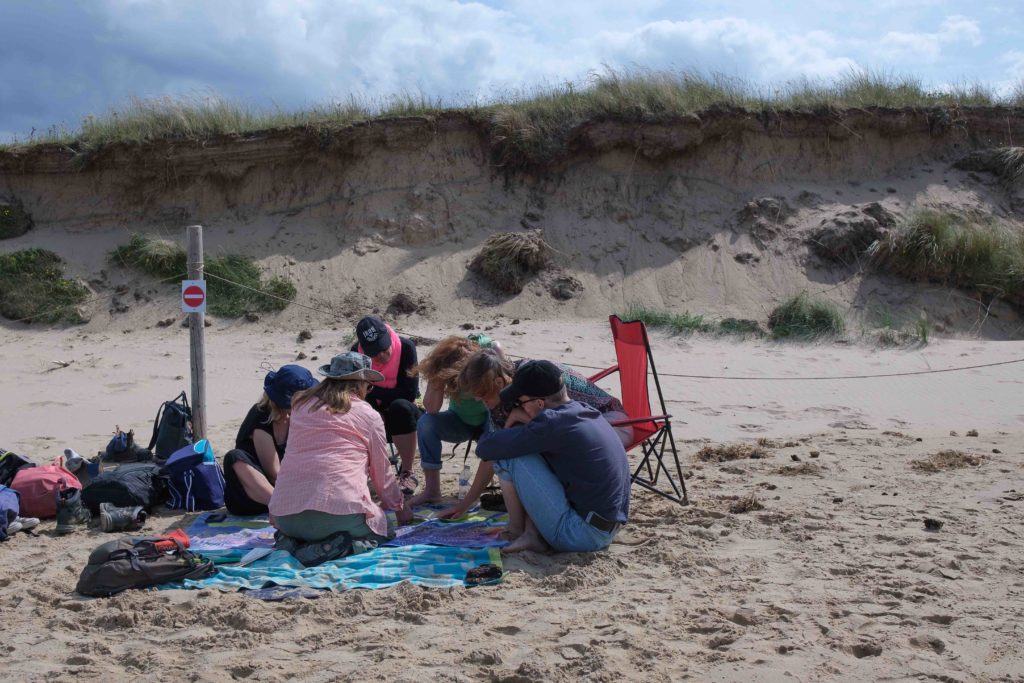
Kathryn Parsons told us a series of fables, deriving from the collection she had made of hybrid creatures, combining earth and sea elements – sea urchin shells with plants; shells and stones; seaweed, and twigs from bushes. Her fables told of the fears expressed by of the creatures and plants of the land and how the creatures of the sea vowed to help them, offering their shelter, strength and experience, reassuring them that life was not so much under threat. It was a series of stories of symbiosis and cooperation, which reduced many of us to tears.
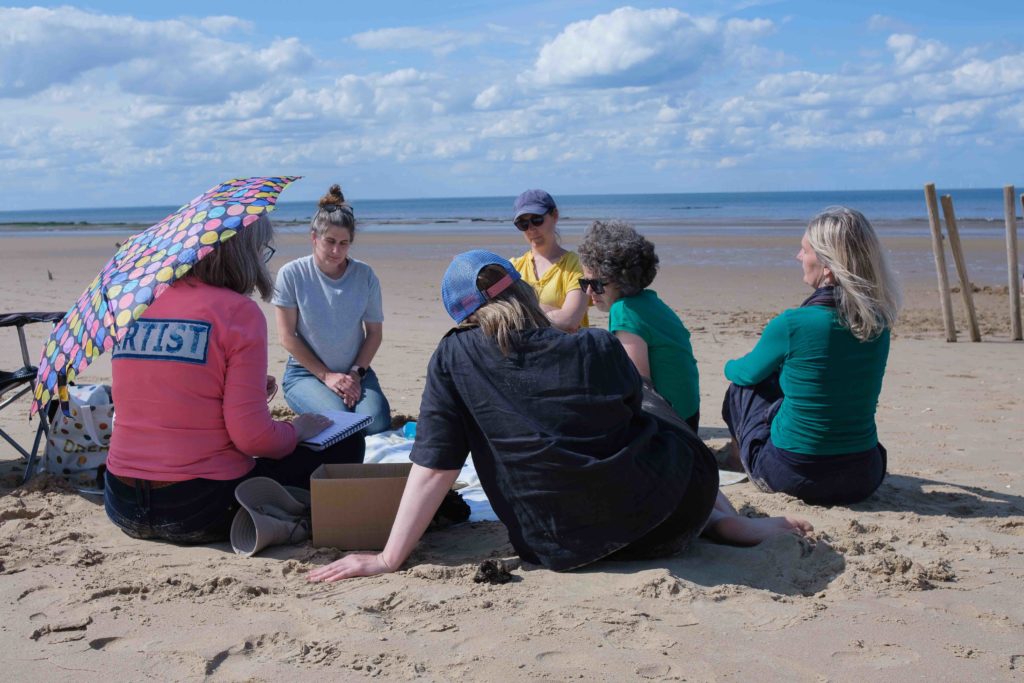
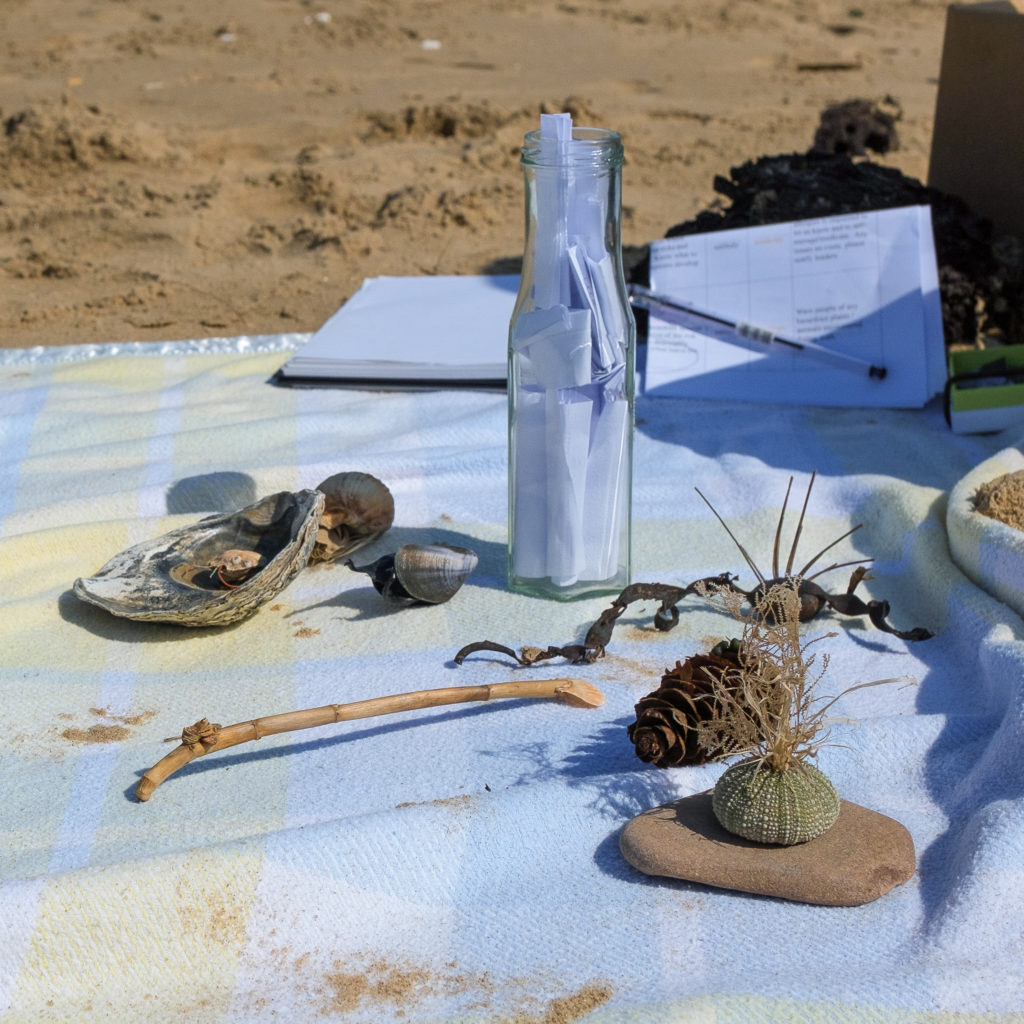
Caroline Chouler-Tissier talked about her approach as a ceramicist. Focusing on material properties, she said she had tried working with the media at hand, with no extra tools and suggested that we did the same. So each person dug and scrabbled in the wet sand, occasionally using a shell as a spade, some trying to make pits and holes, some building with stones they had excavated. What we each discovered very quickly was just how unstable and shifting is that shore-line environment.
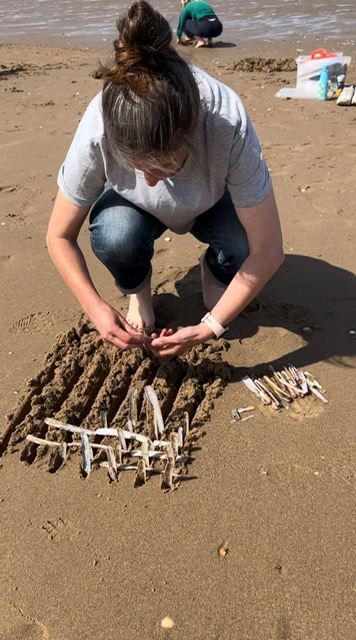
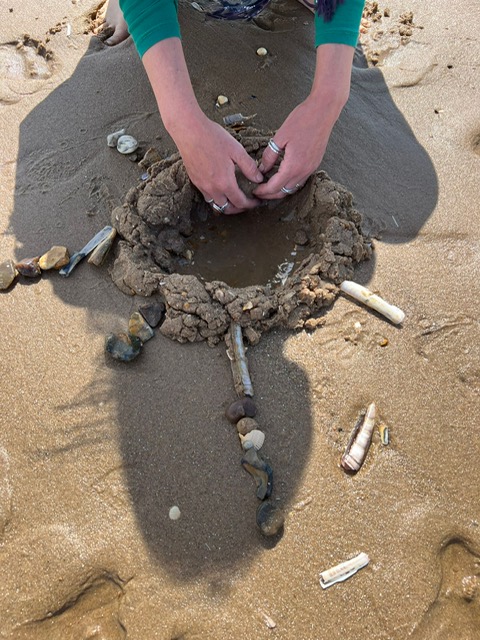
Heidi McEvoy-Swift, as a textile artist, brought cloth and needles and thread to the beach. Encouraging us to think about the border between land and sea, she invited us to come up with a word that described one or other characteristic or property. We wrote it and them chose cloth on which to embroider it. Afterwards she intended to bring them all together and make a single cloth combining all of our land and sea perceptions.
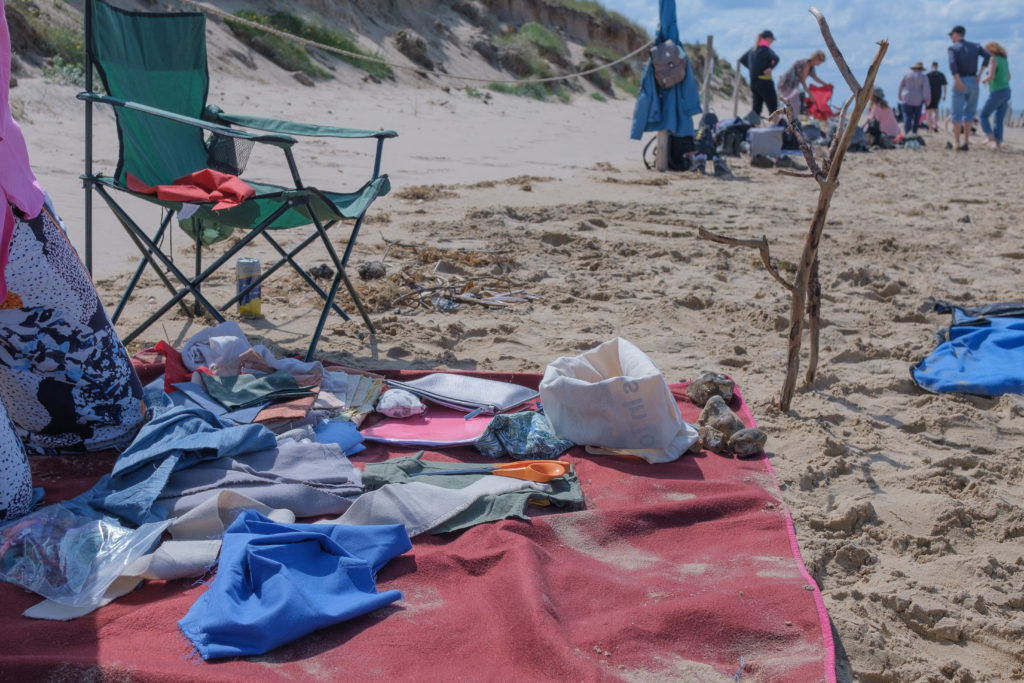
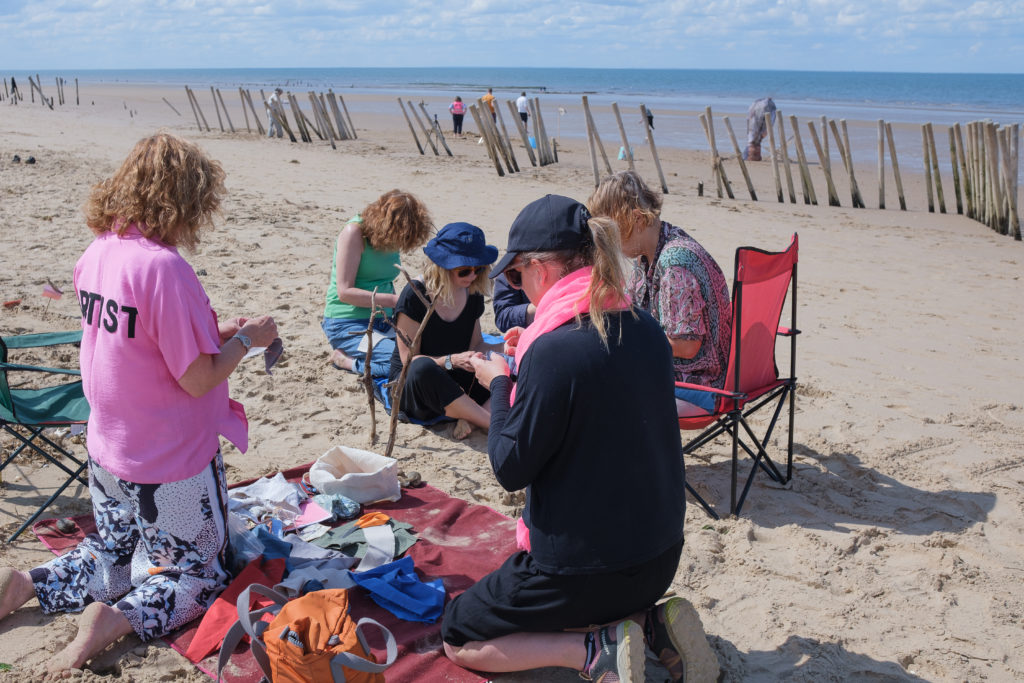
The Ear of the Sea programme:
Installation and activities on the beach at Holme Dune Nature Reserve by Ground Work Network Artists. Friday 26th July 2024 2-4.30
Welcome and introduction – Jane Scobie, break into 5 groups.
Artists encounters – participants visit the 5 artist installations on the beach in rotation, in small groups. You have the opportunity to engage in activities and talk to artists about the work presented for 15 minutes before moving on to the next encounter.
Jane Scobie – Half Baked (2024) – Help build a 10m long sea wall using loaf tins, hopefully in sync with tide so we can see it demolished at the close! Ear of the Sea (2024) – contemplate the ocean from a deckchair under the Ear of the Sea, what will it whisper to you? @janescobieartist
Kathryn Parsons – Evolution (2024) – Miniature sculptures and storytelling; a fable exploring responses to climate change and the proposed Wash barrier. “One summer evening when the moon was high over The Wash, the sea-dwellers and land-folk gathered. There were fish and crustaceans, seaweeds and fir trees, Godwit and Sanderling and seals…” @kathrynparsonsartist
Caroline Chouler-Tissier – Material Cycles (2024) How do we behave with the Sea in order to understand it, in order to hear it? A “listening to the sea” relationship, observing its movement and character, seeing its form and acknowledging its force. To have a dialogue with nature, that starts with nature not humans, the Sea has to be a character in all of our stories. How can we look after it, if it is as important as our families, our children, our parents? @carolinechoulertissier
Heidi McEvoy-Swift – See Here? Sea Here Using today’s strand-line as a defining position, I will be making a piece of work that records the balance of opinion amongst those of us in this place at this time. Participants will use the beach itself, and the items washed up on it to ask questions or express any opinions we hold about rising sea levels, the threats or advantages, and who or what has the most power in this scenario. You will be invited to sit with the sea and sew. @mcmswift
Sophie Marritt – Seawall: Sounding The Wash A talk with postcards on the unique & dynamic environments bordering The Wash, from Skegness to Holme Dunes. This tour takes in some of the vast wild coastal landscapes and habitats of sand dune, shingle, saltmarsh, mudflats, fenland; and the challenges of natural and man-made flood defences.
Followed by discussion and feedback led by Veronica Sekules – Director of Groundwork Gallery Group reading of poem Strandline Deposition to the Sea and close.
